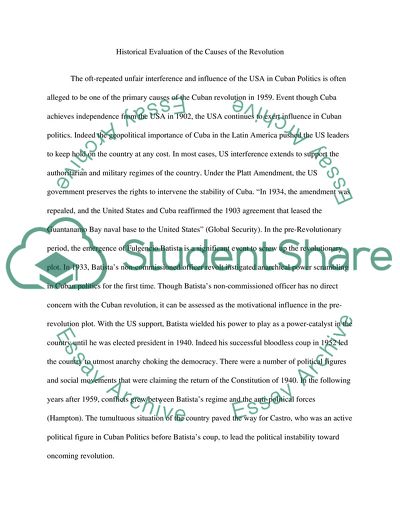Cite this document
(The Cuban Revolution Essay Example | Topics and Well Written Essays - 1500 words, n.d.)
The Cuban Revolution Essay Example | Topics and Well Written Essays - 1500 words. Retrieved from https://studentshare.org/history/1722796-examine-the-cause-and-consequence-of-the-cuban-revolution-and-its-wider-significance-in-the-latin-american-context
The Cuban Revolution Essay Example | Topics and Well Written Essays - 1500 words. Retrieved from https://studentshare.org/history/1722796-examine-the-cause-and-consequence-of-the-cuban-revolution-and-its-wider-significance-in-the-latin-american-context
(The Cuban Revolution Essay Example | Topics and Well Written Essays - 1500 Words)
The Cuban Revolution Essay Example | Topics and Well Written Essays - 1500 Words. https://studentshare.org/history/1722796-examine-the-cause-and-consequence-of-the-cuban-revolution-and-its-wider-significance-in-the-latin-american-context.
The Cuban Revolution Essay Example | Topics and Well Written Essays - 1500 Words. https://studentshare.org/history/1722796-examine-the-cause-and-consequence-of-the-cuban-revolution-and-its-wider-significance-in-the-latin-american-context.
“The Cuban Revolution Essay Example | Topics and Well Written Essays - 1500 Words”, n.d. https://studentshare.org/history/1722796-examine-the-cause-and-consequence-of-the-cuban-revolution-and-its-wider-significance-in-the-latin-american-context.


